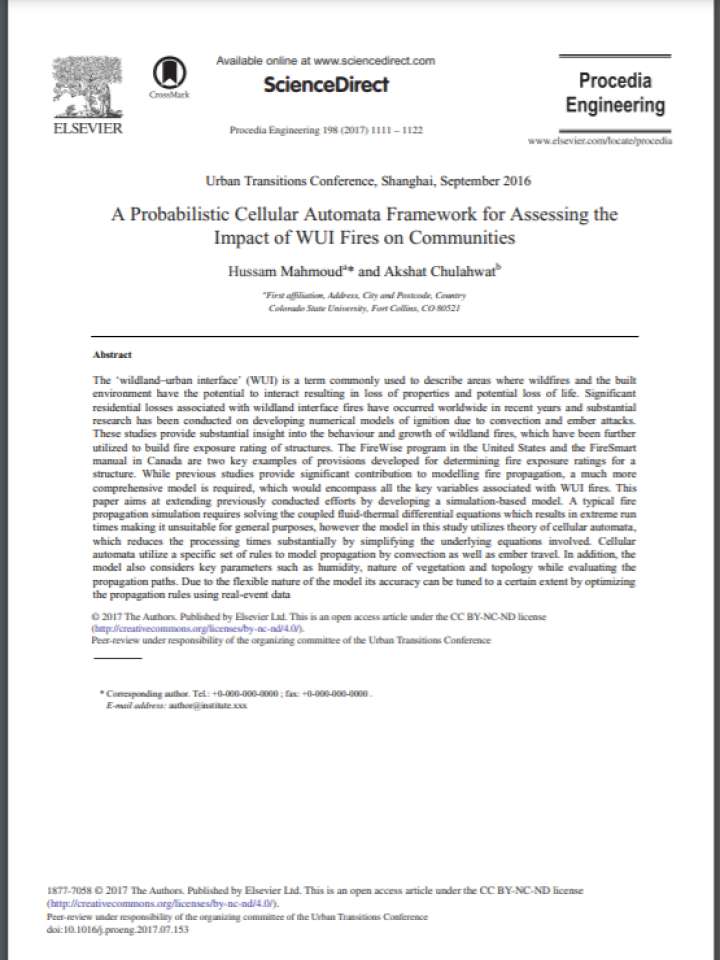A probabilistic cellular automata framework for assessing the impact of WUI fires on communities
While previous studies provide significant contribution to modelling fire propagation, a much more comprehensive model is required, which would encompass all the key variables associated with ‘wildland–urban interface’ (WUI) fires. This paper aims at extending previously conducted efforts by developing a simulation-based model. A typical fire propagation simulation requires solving the coupled fluid-thermal differential equations which results in extreme run times making it unsuitable for general purposes, however the model in this study utilizes theory of cellular automata, which reduces the processing times substantially by simplifying the underlying equations involved.
The result of this paper is the extenstion of previously conducted efforts through the development of a simulation-based model. The model utilizes theory of cellular automata and considers key parameters such as humidity, nature of vegetation and topology while evaluating the propagation paths. Due to the flexible nature of the model its accuracy can be tuned to a certain extent by optimizing the propagation rules using real-event data.
Explore further
